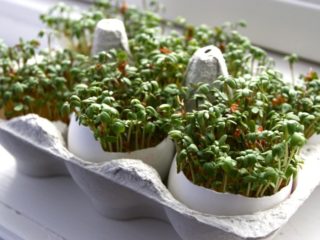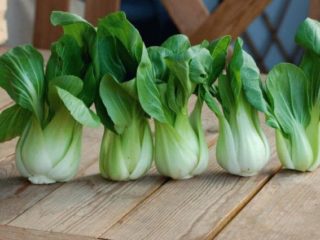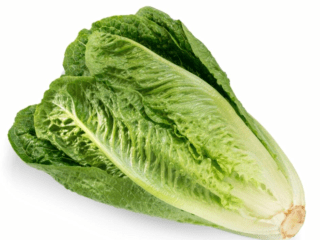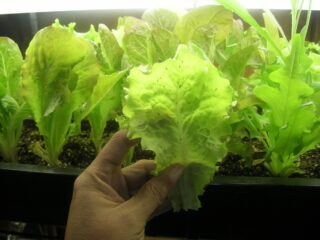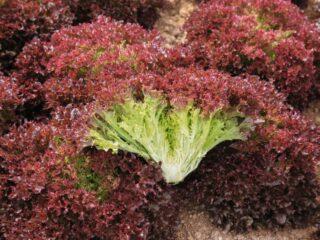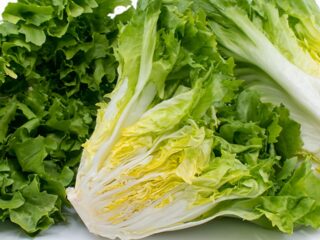Content
Leaf lettuce is valued not only for its rich chemical composition, but also for its ease of cultivation and the ability to grow both in open ground and at home. The Azart salad meets all these criteria: it was bred by Russian breeders quite a long time ago, and accordingly, the pros and cons of the crop are well known to gardeners.
Description of the Azart variety salad
Leaf lettuce Azart is a domestic variety bred by breeders of the scientific and technical company Spora. Listed in the State Register since 1994. It is recommended for cultivation on personal plots and is suitable for planting in any Russian region where the climate, in principle, allows for gardening.
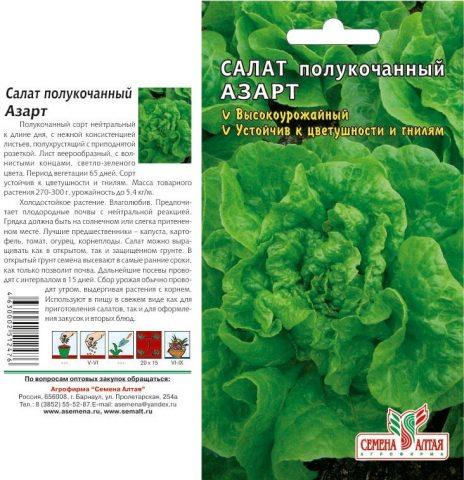
Several agricultural companies have licenses to sell Azart variety seeds.
Azart lettuce has a fast growth rate, reacts “neutral” to daylight hours and is resistant to flowering. The combination of these properties allows it to be grown year-round - in heated greenhouses and at home.
In terms of ripening time, Azart belongs to the mid-season varieties.From the moment the seedlings emerge from the seeds to the cutting of the greens, 60-65 days pass.
The rosette of the Azart salad is half-headed. One plant produces 230-300 g of green mass per season. When planted in open ground, its yield is 4-5.5 kg/m². Such high rates are due to the absence of “losses” due to flowering and plants going into the “arrow”: the breeders provided appropriate protection.
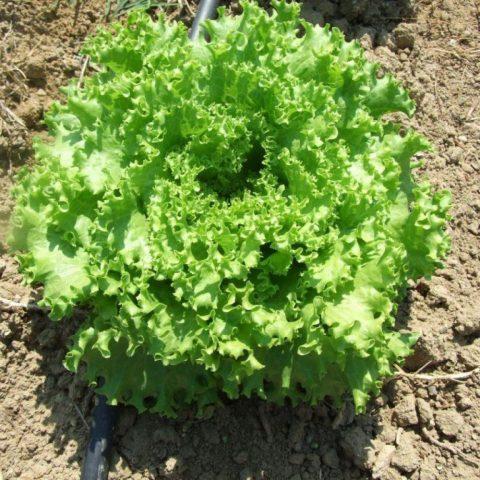
This variety forms a kind of head of cabbage, but it is very loose and easily disassembled into individual leaves.
The height of the rosette is 25-27 cm, diameter is 30-32 cm. It is quite compact, not spreading. The leaves are round, almost the same length and width (23-24 cm), bright green. The edges are cut with small “teeth” and are noticeably “wavy”. The surface of the leaf plates is slightly “bubbly”. To the touch, Azart lettuce leaves are thin, soft, without hard fibers in the veins.
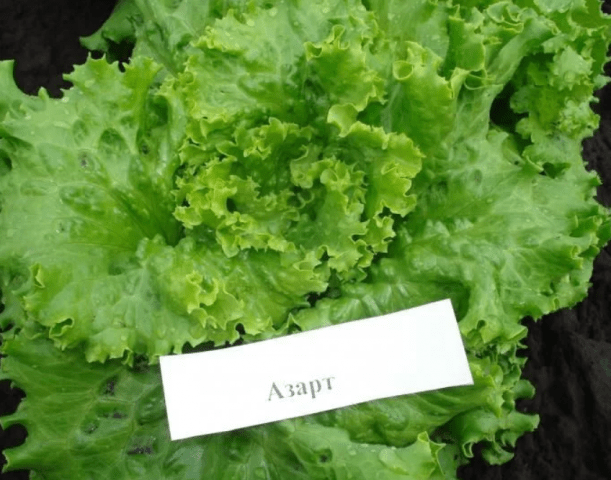
The texture of the leaves when eaten is very tender, slightly crunchy.
Diseases affect Azart extremely rarely. Particularly noted is its low susceptibility to the most dangerous diseases for the crop - black leg and various types of rot.
Advantages and disadvantages
The undoubted advantages of the variety include:
- suitability for planting in any Russian region suitable for gardening;
- possibility of year-round cultivation in open, closed ground and at home;
- fairly high yield, stable and independent of daylight hours;
- the ability to survive a short drop in temperature to negative values;
- compactness of the sockets, which allows you to compact the plantings and save space in the garden bed;
- “innate” resistance to flowering and bolting;
- extremely rare cases of damage by typical and most dangerous diseases for the crop;
- good taste and pleasant texture of greens.
No objective disadvantages that could seriously reduce the popularity of Azart salad among gardeners have been identified during the entire period of its cultivation. The only drawback can be considered the unsuitability of the leaves for long-term fresh storage, but this is a common property of all green crops. Since Azart is included in the State Register of Selection Achievements, its advantages and disadvantages can be judged objectively.
Features of growing Azart lettuce
Regardless of the chosen growing method, Azart salad does not require complex and time-consuming care. In fact, both in open ground and at home it requires similar agrotechnical measures.
Growing Azart lettuce from seeds in open ground
Azart lettuce is cultivated using the seedless method, sowing seeds directly into the ground. Depending on the climate in the region, planting time varies from early April to mid-May. The seeds of the plant are quite large, it is easy to sow them individually immediately according to the pattern optimal for adult rosettes - 20-25x30-35 cm.
A well-lit and sun-warmed bed is ideal for Azart salad. Plants will not be damaged by direct sunlight or gusts of wind. It is desirable that the substrate be fertile, rich in humus, but at the same time loose.Acid-base balance – neutral or slightly alkaline (6.0-7.0).
Caring for plants in the garden is limited to the following activities:
- Watering. Overmoistening the soil for Azart lettuce is harmful; weekly watering is enough for it. In hot weather, the intervals are halved. The optimal time is evening. To ensure that the greens are as juicy as possible and have a rich taste, watering is stopped 10-12 days before cutting.
- Fertilizer application. Azart salad, like any mid-season varieties, is fed twice. When the seedlings grow to 6-8 cm, apply mineral nitrogen fertilizer or a suitable folk remedy. As soon as the “head of cabbage” begins to form, it is a comprehensive fertilizer for greenery.
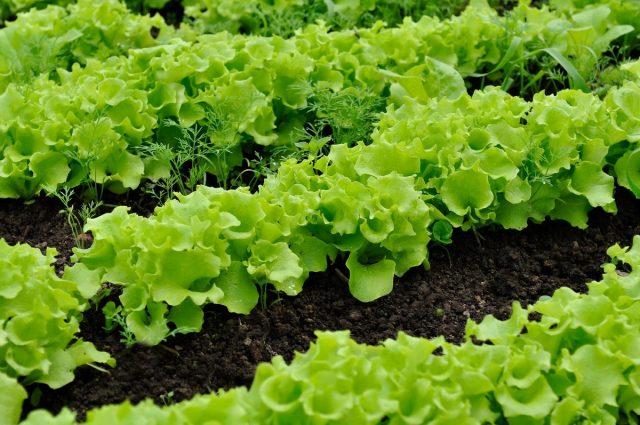
According to the rules of crop rotation, Azart lettuce can be planted in the same bed no more often than once every two years.
Growing Azart lettuce from seeds on the windowsill
To grow Azart salad at home, plant it in pots or other containers with a volume of 1-2 liters. You can cultivate greenery on the windowsill all year round, provided it is illuminated with phytolamps in those seasons when there is not enough natural light.
For Azart salad, universal soil for seedlings is quite suitable. A drainage layer is required at the bottom of the container. Seeds are sown to a depth of 1 cm, providing a “greenhouse effect” and the absence of light. It takes 4-6 days for seedlings to appear. After this, the container is moved to a well-lit place.
The optimal temperature for plants is 16-20 °C. They tolerate a decrease to 6-8 °C better than prolonged heat and low air humidity.
Caring for Azart lettuce when grown from seeds at home is limited to watering every 2-3 days and fertilizing once every 1.5-2 weeks. In extreme heat, plants can be sprayed. When choosing a fertilizer, take into account that Azart lettuce leaves tend to accumulate nitrates, so you need to avoid an “overdose” of nitrogen.
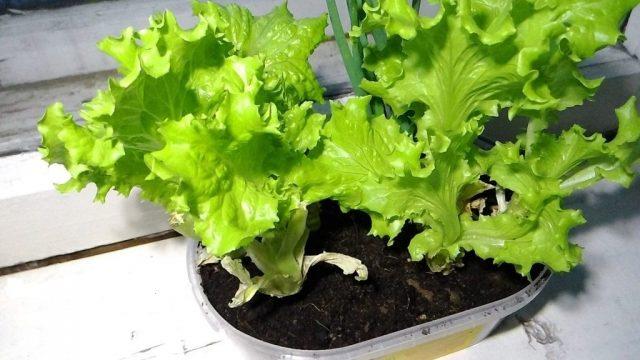
It is better not to use natural organic matter for fertilizing - the soil will give off an unpleasant odor that can attract pests
The benefits and harms of Azart salad
The combination of low calorie content and rich chemical composition allows those who are on a diet to include Azart salad in the menu. Its health benefits are as follows:
- stimulation of digestion;
- normalization of blood composition;
- strengthening the walls of blood vessels;
- maintaining youthful and healthy appearance of skin, hair, nails;
- mild diuretic effect;
- beneficial effects on the nervous system, stimulation of brain activity;
- immune support;
- prevention of hypertension;
- normalization of metabolism;
- activation of tissue regeneration at the cellular level;
- improvement of lactation and quality of breast milk in women;
- recovery after a serious illness.

100 g of greens contains only 15-18 kcal
Regular consumption of Azart salad can lead to increased gas formation. However, greens will cause serious harm to health only if you include them in the menu if you have certain chronic diseases:
- gastritis;
- pancreatitis;
- colitis;
- stomach and intestinal ulcers;
- enteritis;
- urolithiasis disease;
- gout;
- arthritis;
- arthrosis
Application
Greens can become a completely “self-sufficient” dish if you salt them a little, add spices to taste and dressing. For greater satiety and without loss of benefits, the Azart salad is “supplemented” with:
- cheese;
- boiled eggs;
- avocado;
- nuts and seeds (flax, sesame, pumpkin);
- boiled chicken or other lean meat.
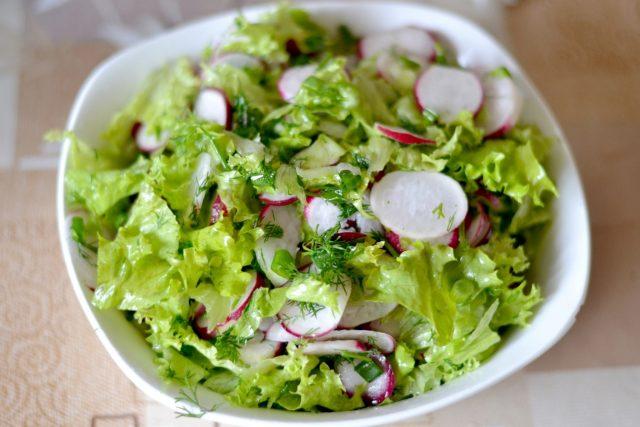
Leaf salad Azart goes well with almost any vegetables and herbs
Salad is also used to decorate dishes, served as an independent side dish or one of its components for meat, poultry, and fish. Puree soups are prepared from it, boiled and stewed.
Conclusion
Leaf lettuce Azart is a valuable source of vitamins, macro- and microelements, widely used in cooking. Fresh greens, when regularly included in the menu, provide “multiple” health benefits. The small size of the plants and the speed of leaf formation allows you to provide yourself with a harvest throughout the year, growing the crop both in the open ground and on the windowsill.
Reviews about Azart salad
